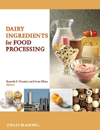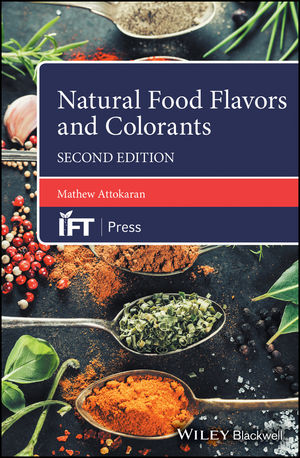The ‘in’ crowd




















Inclusions—old favorites and new creations—are adding the flavor, texture and nutritional benefits consumers are seeking in baked goods and snacks.
For centuries, bakers have been using fruit, nuts, honey and other natural inclusions to create delectable goods for their customers and families. Thanks to steady advances in food technology, many items that were once available only seasonally or from foreign lands are plentiful year-round, enabling consumers to enjoy blueberry muffins, raisin bread and baklava whenever they want. Meanwhile, the constant development of new particulates and inclusions by food technologists is enabling bakers and snack manufacturers to create unique new products with interesting flavors and nutritional benefits.
A number of inclusion producers and marketers recently discussed the offerings consumers demand from them and how bakers and snack manufacturers are incorporating them into their products.
Berry nice
“I think it’s very, very positive,” says Jeff Manning, chief marketing officer for the Lansing, Mich.-based Cherry Marketing Institute, of the demand for tart cherries. “The usage of tart cherries is much broader than it used to be in baking. There’s a fair amount of research that shows that the whole tart/sour taste is very much on-trend, and tart cherries are, of course, tart/sour.”
But bakers and consumers are discovering that there’s more to like about tart cherries than just their taste. They’re considered a superfruit, which appeals to people seeking products made with healthy ingredients, such as antioxidants, and they add color to recipes. “Sweeter Bing cherries are almost black,” says Manning. “Tart cherries are red—as in bright red.”
As more bakers and snack manufacturers begin thinking of cherries as a broadly accepted product and not a specialty fruit, the luscious red orbs are continuing to move beyond traditional baking applications, such as pies, scones, muffins and cookies, to snacks, such as granola and energy bars. “We’re also seeing them in breads, which is kind of interesting,” says Manning, adding that he recently came across whole-wheat bread with dried cherries, raisins, walnuts and other grains at a local store.
Despite their growing acceptance by consumers, bakers and snack producers, tart cherries aren’t likely to displace fruit favorites such as blueberries and raisins anytime soon. “People aren’t dropping blueberries from their recipes,” says Manning. “What they are doing is supplementing with cherries. You know, raisins are a phenomenal product. The supply is huge and the price is low. We’re not going to displace raisins, but what bakers are saying, it seems is, ‘Okay, we can do a raisin oatmeal cookie that also has cherries in it.’”
Two forms of tart cherries are typically used in baked goods: Dried and individually-quick-frozen (IQF), which are usually cut. Manning says cherry processors do a good job of adapting to bakers’ needs and dealing with moisture issues sometimes associated with using cut fruit in certain applications.
Another round, red superfruit appearing in more prepared foods is that Thanksgiving Day superstar, the cranberry. While most fresh cranberries are destined to become sauce or juice, dried cranberries are being used by bakers and snack producers to add flavor, nutrients and color to a variety of baked goods and snacks.
Decas Cranberry Products Inc., Carver, Mass., has developed a number dried cranberry variations in the past year, according to chief marketing officer Matt Devine. They work very well as baked goods inclusions. “LeanCrans have 50% less sugar and five times the fiber of traditional dried cranberries and still provide all of the healthy and delicious attributes consumers associate with all-natural cranberries,” he says. “We have also introduced OmegaCrans, which are enhanced with naturally occurring Omegas derived from cranberry seed oil.”
Decas offers its dried cranberry products in a number of sizes and cuts, making them suitable for a variety of applications. Both products can be used in trail mixes, snacks, cereals, baked goods (breads, cookies and breakfast bars) and salads. LeanCrans can also be used in dairy and confectionery formulations.
Meanwhile, Decas recently added single-serve packages of its Funny Face Dried Cranberries to its line of low-sugar, no-fat snacks for children.
And speaking of versatile fruits, blueberries continue to be sought out by food manufacturers for many products—baked goods, snacks, ice cream, beverage, sauce and salsa, to name a few—for numerous reasons. Their phytonutrients, which are naturally occurring antioxidants, vitamins and other beneficial attributes, give them superfruit status. They are available in a variety of easy-to-use formats: Fresh; frozen; dehydrated; preserved; canned; concentrate; juice; and powder. They are synergistic with amaranth, buckwheat, chia, faro, kamut, millet, oats, quinoa, sorghum, spelt, teff and other grains being sought out by health-conscious consumers. Lastly, they have a good reputation among consumers.
“People associate blueberries with natural goodness, good times, happy days, health and wellness as well as the positive associations of comfort foods,” says Thomas J. Payne, an industry consultant for the U.S. Highbush Blueberry Council, Richmond, Va. “Consumers are looking for products that help them include more healthy blueberries in their diets.”
According Irv Dorn, sales manager for Van Drunen Farms, “Berry products in general—strawberries, blueberries, raspberries, blackberries—are just really popular now, I think, stemming from health perceptions and flavor as well.” The Momence, Ill., company offers a variety of low-moisture and freeze- and drum-dried berries; IQF and freeze-, drum-, air- and sun-dried vegetables; and IQF and freeze- and air-dried herbs.
The company’s freeze-dried fruits, in particular, are attracting a lot of interest. “There’s more and more interest in freeze-dried products as standalone snack foods,” says Dorn. “They’re totally and completely a 100%-natural product. They maintain good piece identity. From a nutritional standpoint, you lose [only] a minimal amount of nutritional value during the freeze-drying process. They have a really good flavor—it’s the closest you can get to fresh fruit flavor in a dehydrated product. Basically, as our society becomes more health-conscious, people are looking for any kind of convenient, healthy, all-natural snack foods.”
Van Drunen’s freeze-dried fruits are also finding their way into granolas, bars, cereals and baked goods for these same reasons. “They can just be added directly into a lot of bakery applications,” says Dorn. “That’s the beauty of them.”
The only challenge bakers must address when using freeze-dried products involves adjusting the moisture content in their initial applications. “If the inclusion rate is really high, then the freeze-dried products can absorb quite a bit of the moisture that’s in an application,” explains Dorn. “[Bakers] may have to make slight adjustments to the amount of water that they’re adding to a bakery application to make certain that the end product is moist enough.”
Going nutty
Like fruits, nuts and seeds are getting a second look from consumers seeking healthier snacks…and from bakers and snack producers happy to oblige them.
Innova Market Insights’ 2011 Global New Products data reveals, for instance, that snacking is the leading category for new almond product introductions in North America and that almonds are the most popular nut within the snack category. “Consumers are ranking California almonds as the nut that is a good snack and heart-healthy,” says Harbinder Maan, marketing manager for the Almond Board of California in Modesto.
Bakery, meanwhile, is the fourth most important category for almond introductions in North America, according to Maan, but the second most important category around the world, with 7% growth in 2011, compared to 2010. She cites the use of almonds in a variety of baked goods—French pastries and macaroons, for example—and ethnic cuisines as reasons for the disparity.
Blue Diamond Growers, Sacramento, Calif., also says worldwide demand for almonds continues to remain strong. According to the company, at the end of October 2012, with the first three months of new crop shipments complete, two of the industry’s largest markets were up significantly—8% in North America and 18% in China.
For consumers, almonds provide numerous nutritional benefits, come in a variety of forms that make them ideal for snacking, cooking or baking, offer a pleasing crunch and have a mild, buttery flavor that complements other flavors. For food formulators, almonds are a great go-to ingredient, according to Blue Diamond Growers. They enhance texture and the visual appeal of bakery and snack products—everything from cakes, cookies and pastries to snack mixes and granola bars.
“Blanched almond products provide a nice contrast to darker-colored bakery products, while natural almond products are better suited to products,” says Jennifer Eastman, food scientist, Blue Diamond Almonds Global Ingredient Division. “Using flavors on almonds can provide food products that extra pizzazz formulators often seek.”
But almonds aren’t the only nuts over which consumers are “going nuts.” According to the 2011 California Walnuts Attitude & Usage Study conducted by Rose Research, leading indicators of consumer behavior indicate that walnuts also continue to be in demand. In fact, 61% of people are buying walnuts more often than five years ago. While baking continues to be the core use for walnuts (77%), snacking is close behind (74%).
Jennifer Getz Olmstead, marketing director, domestic, for The California Walnut Board, Folsom, notes that walnuts are abundant in good polyunsaturated fat and Omega 3, and have a rich flavor and soft “bite” that works well in both firm cookies like biscotti and in soft baked goods like brownies. Walnut pieces in baked goods also have great synergy with carrots, raisins and cranberries, while walnut meal can be a great substitute for flour in baked goods.
Bakers and snack producers, meanwhile, are finding that California walnuts have a sweet mild taste that makes savory taste sweeter and sweeter taste more savory. Not surprisingly, these attributes make walnuts a versatile ingredient for flavor profiles in recipes and processed products.
Consumer interest in for better-for-you foods and more nutritious ingredients is also prompting people to seek out foods made with ancient grains and seeds, like amaranth, kamut, quinoa, spelt and flaxseed.
“We especially see significant interest and growth in flaxseed in snacks, cereals, granola bars and bakery products, including breads, muffins and cookies,” says Marilyn Stieve, business development manager—flax at Fitchburg, Wis.-based Glanbia Nutritionals, which makes the OptiSol line of flaxseed products.
In addition to offering consumers health and wellness benefits, the flaxseed-based hydrocolloid ingredients provide bakers and snack producers with functional, clean-label, lower-cost alternatives to gums, dough conditioners and emulsifiers, says Stieve. They also address the need for extended shelf life (through strong moisture-management properties), improved dough sheetability, improved crumb structure, improved loaf volume and overall quality improvement of the end product.
Naturally sweet
Another natural ingredient that people have consumed for thousands of years—and continue to enjoy today—is honey.
“Honey’s popularity among bakers and snack producers continues to increase, mainly being driven by consumer preferences for more natural, clean-label products that taste great,” says Catherine Barry, director of marketing for the National Honey Board, Firestone, Colo. “Honey is the perfect sweetener, inclusion and flavor enhancer for consumers who want natural products, but want them to taste like indulgent bakery and snack foods.
“Another factor in honey’s increasing popularity is its familiarity with consumers. We have become a nation of label readers, and more and more consumers are looking at the ingredients in the foods they consume. This is especially true of sweeteners. Honey is simply honey and an ingredient loved and trusted by many consumers.”
Besides serving as a sweetener, honey’s flavor profile makes it the perfect complement to many bakery foods, from artisan breads to cookies, says Barry. In the snack industry, honey helps balance the flavor of spicy potato chips, while in the bar category, it is the go-to ingredient for manufacturers that want a natural sweetener that provides the necessary flavor and texture. On the functional side, honey extends the natural shelf life of baked goods and inhibits mold growth.
“Honey addresses consumer cravings for bakery foods that taste great, but are natural and contain ingredient listings that are clean and familiar,” Barry says. “Consumers will always crave sweet treats and snacks, and honey is perfectly positioned to offer indulgence with a 100% natural sweetener that is made by bees, not in a manufacturing facility.”
Demand for chocolate, another ancient pleasure, continues to remain consistent, too. “Chocolate is still one of the leading flavors in many product categories,” says Marie Loewen, research and development scientist, Blommer Chocolate Co., Chicago. “Dark is more sought after than milk, which is likely due to the well-publicized findings of health benefits associated with dark chocolate, as well as the expansion of the average American’s taste palate and willingness to try new things.
“What is changing is what the food industry is looking for. The demand for customized solutions—flavors, melting profiles, textures, etc.—for specific applications has been increasing. There is also increased demand for more sustainable and socially and economically responsible chocolate and cocoa products.”
Lowen adds that Blommer’s line of low-melting compound coating drops has “really taken off. They provide a novel texture in baked goods, where traditionally the inclusions are much firmer. Also, we’ve been seeing a lot of softer compounds for use as fillings in bakery items.”
Demand for sweet-and-savory products also continues to grow. “We’ve seen that done as salty snacks with a little bit of chocolate—chocolate cheese and chocolate-drizzled snack mix—as well as in custom chocolates and compounds with an unusually high salt level to deliver the salty and sweet all in one inclusion,” explains Lowen.
Like Barry, Lowen says consumers are still looking to indulge. “Chocolate will always be one of the top ways to do that,” she says. “Because it pairs well with so many different flavors and applications, chocolate readily adapts to meet all the food trends that are out there.”
Georgia Nut Co. can attest to chocolate’s versatility. The Skokie, Ill., company uses it to enrobe nuts (almonds, cashews, peanuts, pecans), fruit (apricots and raisins) and snacks (pretzels and Oreos), as well as to make a variety of confectionery treats, some of which also function as inclusions. The company’s sugar-shelled, milk chocolate Gems, for instance, turn up in cookies, trail mixes and more, says Jill Bracher, R&D developer.
The company also offers dried fruit (cranberries, raisins, mango and more), mixed nuts, brittles and hard and chewy candy.
To address consumers’, bakers’ and snack producers’ requests for products that taste good, have cleaner ingredient declarations and have added nutritional benefits, Georgia Nut offers a variety of better-for-you products, including Gems fortified with protein and fiber; malt balls made with real fruit powders that provide a full serving of fruit; natural, honey-roasted peanuts; and low-coated, fortified granola with lower saturated fats.
As you like it
While Mother Nature gives bakers and snack manufacturers many versatile, nutritious and flavorful inclusions with which to work, her offerings aren’t always compatible with food processors’ formulations or consumers’ dietary restrictions. In addition, they may not be available in large quantities or too costly for large-scale commercial use. For these reasons and others, food manufacturers often turn to customized inclusions when developing baked goods and snack products.
SensoryEffects, Defiance, Ohio, offers customized, technology-driven food and beverage solutions for numerous application categories, including baking, frozen dessert, beverage, dairy and nutritional systems. According to research and development manager Becky Pogoreski, the company’s inclusions are used in standard bakery items (muffins, cakes, cookies, bagels, scones, cupcakes, waffles, pancakes, rolls, bread, biscuits, dry mixes and brownies), as well as appearing in new applications, such as cheesecake, pretzels, pizza crust, snack meats, mashed potatoes and oatmeal.
Over the past year, SensoryEffects has introduced numerous innovations, several of which address bakers’ and snack producers’ needs: Nut-allergen-free/nut-replacement inclusions that can be used as cost-effective, nut-allergen-free replacements for nuts; high-fiber inclusions that, when used at 10% in bakery applications, can make a “Good source of Fiber” claim; a salty inclusion to help developers reduce the overall salt content of their baked good, but still deliver a salty flavor impact; no-trans-fat, Kosher pareve meat inclusions with flavor profiles and intensities that can be adjusted to suit customers’ needs; and flavors not yet on the public radar, such as blood orange, acai, red velvet cake, salty caramel and guava.
“SensoryEffects inclusions can be made to contain no trans-fat or preservatives, and use natural flavors and colors,” Pogoreski explains. “They can be nonGMO, to help the developer meet nutritional and labeling needs. Our products are also highly customizable in terms of flavor, color and nutrition. Our inclusions also add convenience to the production of baked goods by having the flavor, color and nutritional ingredients added in one shelf-stable product.”
Chaska, Minn.-based QualiTech Co. also introduced a number of inclusions this past year that address both consumer trends and bakers’ and snack producers’ needs.
“Healthier eating and ‘natural’ foods are the biggest trends people are talking about,” says research and development manager Tracy Schrepfer. “Consumers are [also] creating real demand for functional ingredients and more international flavor. We’re seeing [demand for] flavors like bacon, encapsulated sea salt, green tea, ginger, veggie-centric flavors, etc.”
QualiTech’s newest flavors are sure to delight consumers craving interesting tastes. They include sweet potato, caramel sea salt, mango habanero, cheddar horseradish, wasabi, coconut, toasted coconut, ginger, coffee and espresso.
Bakers and snack producers, not surprisingly, are looking for all-natural ingredients, flavor and color systems, as well as things like batch-size flexibility, extended shelf life, quick turnaround, small production runs and more.
QualiTech’s other new and existing products address these needs and more. Its encapsulated sugars and cinnamon sugar, for instance, allow for moisture control during freeze/thaw processes and in finished applications. Flav-R-Grain, a 100%-natural, stabilized corn germ, can be used in multigrain breads, cookies, bars, crackers, stuffing mix, rice dishes, nut extensions, cereals, tortillas, chips and masa flour. Specifically designed for dry-mix applications, Savory Flavor-ettes can be used to add taste and color, as well as nutritional and functional components, to bakery, snacks, pizza crust, seasoning mixes, frozen entrees and more. The company’s scientists also work with gluten-free ingredients and have created uniquely flavored and colored bits with numerous uses.
“Consumers are always hungry for more—more flavor, color and a more intense eating experience in a nontraditional format,” sums up Schrepfer. “We are constantly looking at new concepts and developments, not just in the baking and snack industry, but in the food business overall.”
Looking for a reprint of this article?
From high-res PDFs to custom plaques, order your copy today!



















